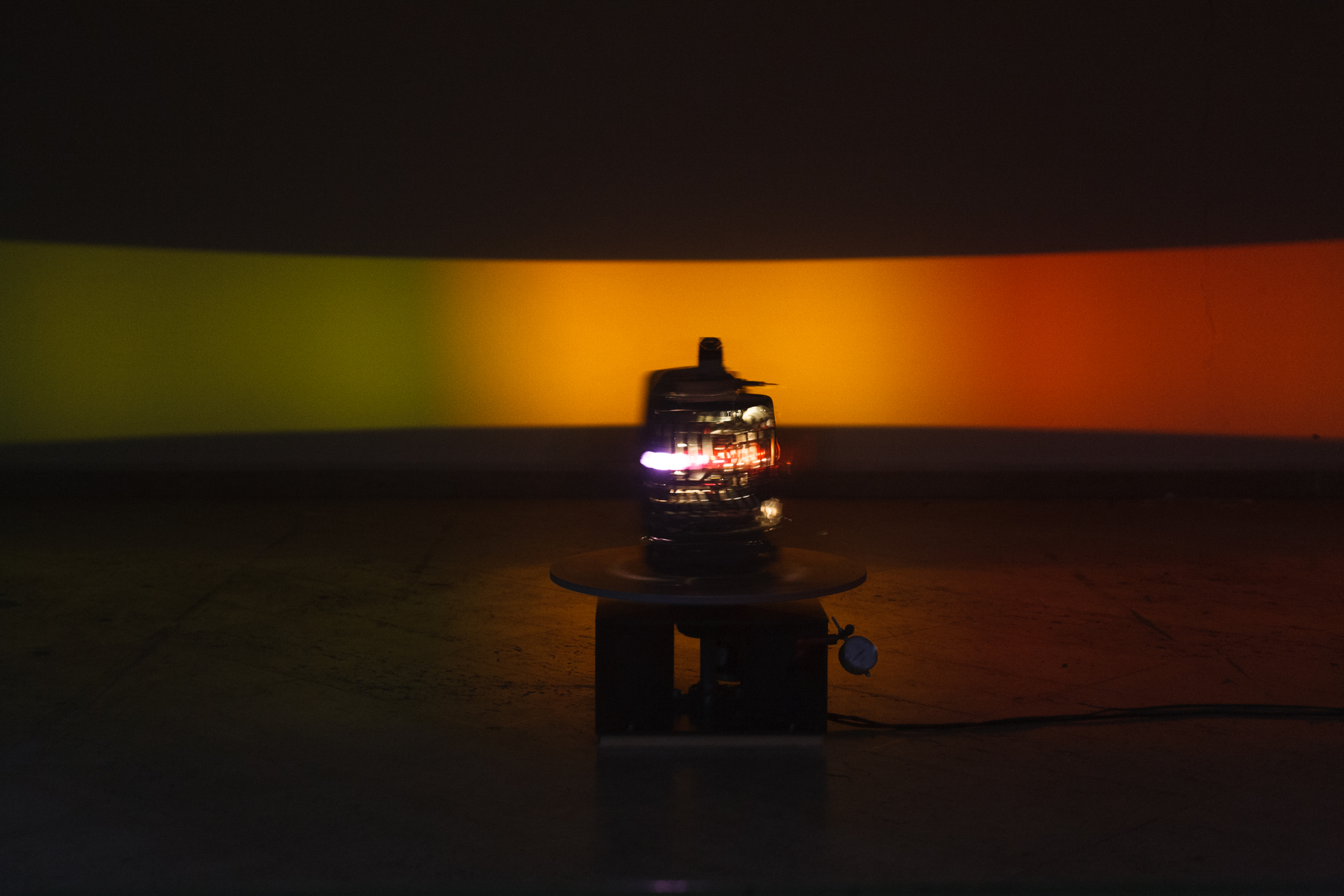ROTOPROJECTOR 1.
in the first iteration the subject of research is fast rotation (120 rpm - 240 rpm) and abstract image.
the tool used was a rotating table and an analog 16mm film projector (siemens 2000), that projects a closed loop consisting of 12 frames of light spectrum - red, yellow, green, cyan, blue, magenta and the shades between(1).
starting with no rotation (0 rpm), the projection is a static picture - a color “smudge” going twice through the whole spectrum in 1 second.
at the start of rotation (speeds 1 - 60 rpm), the projection is perceived as a rotating picture.
approaching the critical speed of 120 rpm(2) the picture begins to “drag” and the spectrum starts to trail behind the main frame.
at 120 rpm the tail of the projection catches up with the projection head - projection is perceived as a static cylinder of light. spectrum colors are registered to the space - i.e. the same color always appears in the same spacial position/coordinates.
approaching speeds faster than 120 rpm, the cylinder starts to rotate clockwise.
at the second critical speed of 240 rpm the colors of the cylinder start to “jump” to their complementary pairs every half second.
1:
the film loops were made by calculating the correct color shade, projecting it with a color enlarger head (meopta meochrom) and shooting the projection frame-by-frame with a bolex h16 camera onto kodak ektachrome color reversal film.
2:
120 rpm is critical because it translates to 1 rotation every 0.5 seconds. the length of the film loop is 12 frames - 0.5 seconds at 24fps projection speed


